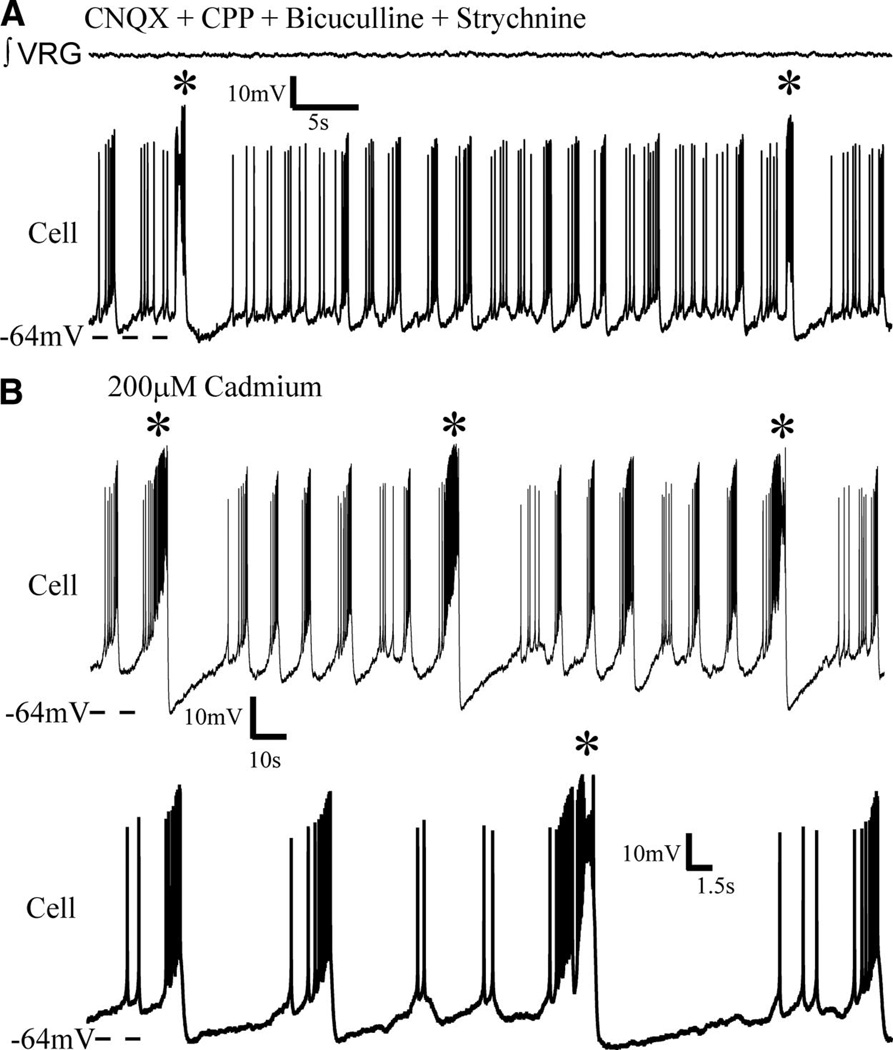FIG. 6.
Following isolation from ionotropic chemical transmission, some inspiratory pacemakers continue to generate two different types of bursts at two different frequencies. A: a subset of previously undescribed isolated pacemakers generate both shorter, higher frequency bursts and longer bursts at a lower frequency [starred (*) bursts]. Synaptic transmission was blocked with CNQX, CPP, bicuculline and strychnine, yet this neuron continued to generate both faster bursts and larger slower bursts (starred), even following (B) subsequent addition of cadmium, that is a nonspecific blocker of calcium mediated synaptic transmission. Note (bottom trace in B) the starred, lower frequency, longer duration bursts are characteristically sigh-like, in that it is biphasic and followed by a phase-reset of shorter, faster bursts.

